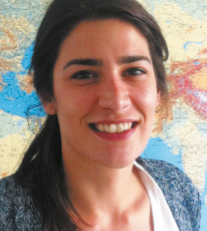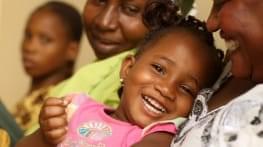Hospital co-development : Interview with Justine Girard, architect
Interview with Justine Girard, architect, in charge of hospital infrastructures at La Chaîne de l’Espoir.
WHY AND HOW IS THE STRENGTHENING OF HOSPITAL STRUCTURE ESSENTIAL IN SOUTHERN COUNTRIES ?
Justine Girard : Today almost all child deaths take place in developing countries with nearly half of them in Africa. Our operations in France, our missions abroad and our training actions, although primordial, have quickly proved insufficient compared to the number of children to be looked after.
In order to effectively and durably meet the medical needs of the countries where we operate, our strategy is simple: give the local doctors the means to operate the indigent children suffering from curable pathologies. The ultimate goal is for each country to acquire true medical autonomy.
According to us, development assistance and skills transfer are in this field inseparable. Without any trained teams, appropriate equipment and hospital structures, nobody can save those children.
WHY HAVE AN HOSPITAL DEPARTMENT WITHIN THE ASSOCIATION ?
J.G : It is precisely to address such needs and issues that La Chaîne de l’Espoir created a “hospital department” 3 years ago. Its missions is to build or strengthen reliable health facilities wherever we act. The association has already been involved for many years in various hospital building, equipment or rehabilitation programmes in Afghanistan, Cambodia or Mozambique, just to name a few.
New projects are currently under development in Senegal and Mali for example.
WHAT IS THE CO-DEVELOPMENT PRINCIPLE BASED ON ?
J.G : Key words are: anticipation, adaptation, risk management and coordination. Those huge projects require many stakeholders and various skills which need to be synchronised. As project manager, we must collaborate with local architects as regards conception and site supervision. It is also very important to know how to listen and respect. Everything that we do is carried out with the maximum respect for the countries where we operate and in cooperation with the relevant local authorities. It is essential to involve all the players beforehand.
This type of project should fully fit in the development strategy of each country. Once the project is completed and skills transfer effective, our support continues beyond the commissioning of the new structures. Our support is progressively reduced until full autonomy of the structure.
HOW ARE THESE ARCHITECTURAL PROJECTS SPECIFIC TO DEVELOPING COUNTRIES ?
J.G : The requirements of quality and reliability remain unchanged. But means are different. We must develop a functional model that takes into account local imperatives. This is true in particular for climate (rain season, intense heat, etc.), local cultural specificities, but also for the physical condition of local water systems and electricity networks or budgetary constraints.
Each project is unique and requires a definition of the best ways to achieve it.




